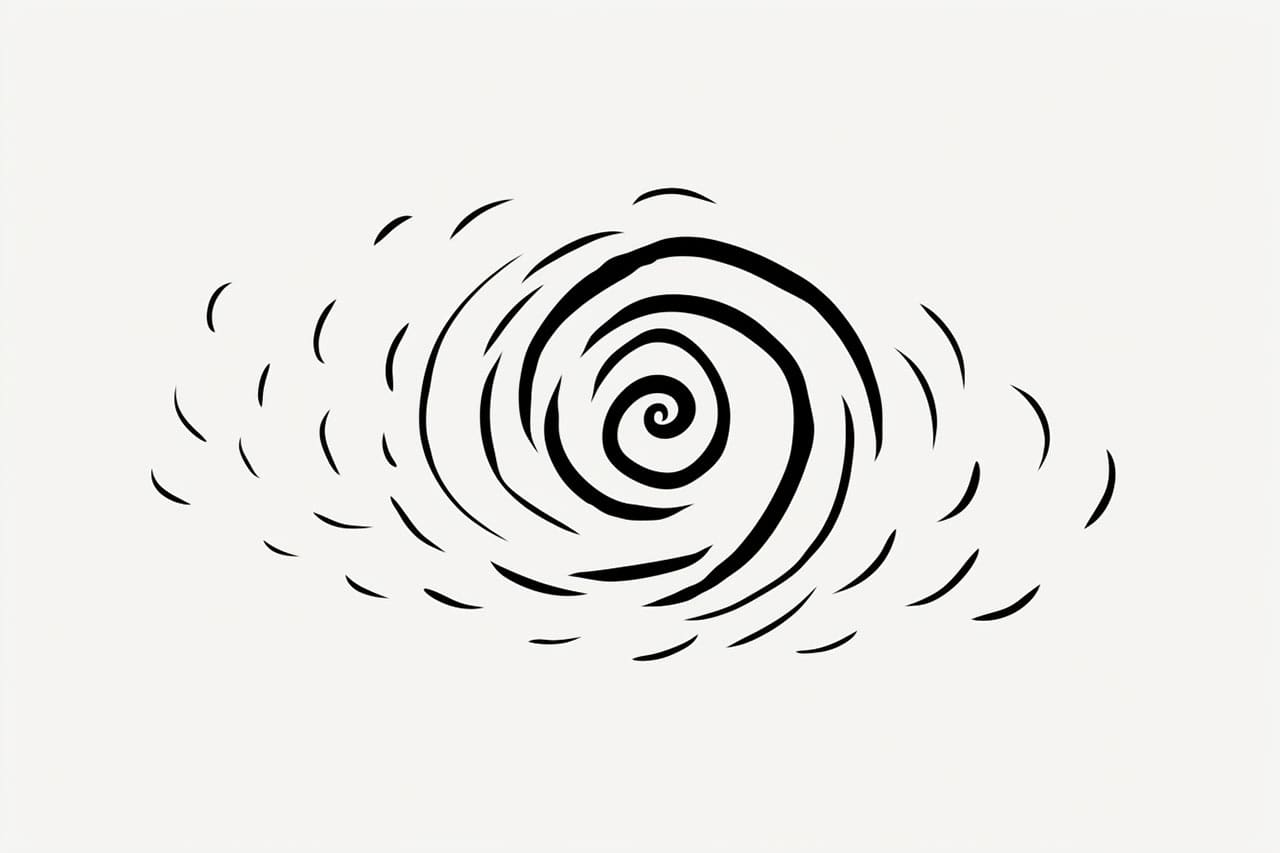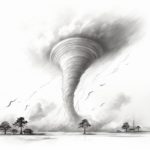
Welcome to an exciting artistic journey, where we’ll dive deep into the captivating process of drawing a hurricane! Whether you’re a beginner eager to learn or an experienced artist looking to expand your repertoire, this step-by-step guide is designed to help you create a captivating and dynamic representation of one of nature’s most powerful phenomena.
In this tutorial, I will share my expertise as both an artist and drawing instructor, ensuring that you grasp each stage of the drawing process with ease and confidence. You’ll learn how to capture the swirling motion, the contrasting calm of the eye, and the intricate details that make hurricanes so breathtaking and awe-inspiring. So, gather your art supplies—pencils, erasers, paper—and get ready to unleash your creativity in a visually striking way!
As we embark on this artistic endeavor, remember that drawing is not just about replicating what you see; it’s about expressing emotion and storytelling through your art. By the end of this tutorial, you’ll not only have a stunning depiction of a hurricane but also a deeper appreciation for the beauty and chaos of these incredible storms. Let’s get started!
Materials Required
Before we begin, let’s gather the materials you’ll need for this drawing:
- Drawing paper
- Pencils of varying hardness (HB, 2B, 4B)
- Eraser (preferably kneaded eraser)
- Pencil sharpener
- Blending stump (optional but useful for creating smooth gradients)
- Reference image of a hurricane (for inspiration and guidance)
Now that we have everything ready, let’s jump right in!
Step 1: Basic Shape
Start by lightly sketching a large oval shape in the center of your paper. This will serve as the foundation for your hurricane. Don’t worry about making it perfect at this point; we’ll refine it later.
Step 2: Spiral Arms
Draw several elongated, curved lines extending outward from the main oval shape. These lines will represent the spiral arms of the hurricane. Vary the thickness and curvature of the lines to add depth and movement. Remember, hurricanes are characterized by their swirling motion, so feel free to experiment with the curves.
Step 3: Refining the Shape
Now it’s time to refine the shape of our hurricane. With a darker pencil (2B or 4B), trace over the preliminary lines you drew in Step 2. Add more detail and definition to the spiral arms, making them appear more dynamic and intricate. Pay attention to the reference image, observing how the spiral arms flow and interact with each other.
Step 4: Adding Texture
To give your hurricane drawing a realistic texture, lightly add some small circular strokes within the spiral arms. These strokes will represent the swirling clouds and winds within the storm. Start with a lighter pencil (HB) and gradually add darker strokes with a softer pencil (4B), focusing on areas where the contrast is higher.
Step 5: Outer Bands
Extend the spiral arms further outward, creating additional waves or bands around the hurricane. These outer bands contribute to the overall mass and intensity of the storm. Remember to make these lines uneven and irregular to capture the turbulent nature of a hurricane.
Step 6: Eye of the Storm
At the center of the hurricane, draw a small circular area with calm and clear skies. This is known as the eye of the storm. The eye provides a visual contrast to the rest of the drawing, showcasing the calmness amidst the chaos. Add a few wispy clouds around the edges of the eye for added realism.
Step 7: Shading and Contrast
Now it’s time to enhance the depth and three-dimensionality of your drawing through shading and contrast. Shade the spiral arms and outer bands with a combination of light, medium, and dark tones. Focus on creating smooth transitions between the different shades to make the hurricane appear more realistic. Use your blending stump to blend the shades together for a smoother appearance.
Step 8: Highlights and Details
To make your hurricane drawing pop, add highlights and fine details using an eraser. Lightly erase some areas within the spiral arms to create highlights, suggesting that light is reflecting off the swirling clouds. Pay attention to the light source in your reference image and add highlights accordingly. Additionally, add more depth and definition by adding extra details, such as small clouds or debris being swept up by the storm.
Conclusion
Congratulations! You have successfully learned how to draw a hurricane. By following these step-by-step instructions and using your creativity, you have created a powerful and realistic depiction of a chaotic storm. Remember to practice regularly to improve your artistic skills, and don’t hesitate to experiment and add your personal flair to your drawings.
Now that you know how to draw a hurricane, let your imagination run wild and continue to explore the fascinating world of drawing. Stay tuned for more drawing tutorials and helpful tips on honing your artistic abilities.
Fun Facts About Hurricanes
- Hurricanes are massive tropical storms that can stretch over 600 miles across and have powerful winds exceeding 75 mph.
- The term “hurricane” is used in the Atlantic and northeast Pacific, while similar storms are called “typhoons” in the northwest Pacific and “cyclones” in the South Pacific and Indian Ocean.
- A hurricane’s energy can release more than 600 trillion watts through cloud and rainfall formation, equating to the energy of 10 atomic bombs per second!
- The eye of a hurricane is a calm area, often 20-40 miles wide, surrounded by a wall of severe winds and rain.
- Hurricane season occurs from June to November in the Atlantic, with peak activity usually in September.
- Hurricane Katrina in 2005 was one of the costliest hurricanes on record, with damages surpassing $160 billion.
- The word “hurricane” derives from “Huracan,” a name for the Carib Taino god of evil.
- Hurricanes have designated names, which alternate male and female, and are reused every six years unless a storm is so deadly that its name is retired.
- The Saffir-Simpson scale classifies hurricanes into five categories based on wind speed, which helps gauge potential property damage.
- Despite their destructive power, hurricanes play a crucial role in regulating Earth’s temperature by redistributing heat from the equator to the poles.
Suggestions for Scenes and Settings for Hurricane Drawings
- Stormy Ocean: Illustrate a dramatic seascape with towering waves crashing amid fierce winds, under a swirling hurricane sky.
- Calm Eye of the Storm: Depict the surreal calm inside the eye of a hurricane, with a ring of ominous clouds circling above.
- Rainforest Cyclone: Create a vivid scene of a hurricane sweeping through a tropical rainforest, uprooting trees and scattering leaves.
- City Under Siege: Imagine an urban setting with buildings bending to the wind, debris flying through the air, and dark clouds ominously swirling above.
- Satellite View: Design a space-based perspective showing a hurricane’s massive spiral structure over the ocean, highlighting its sheer scale.
- Pre-Storm Serenity: Capture the eerie stillness and darkening skies just before a hurricane makes landfall, with birds taking flight to safety.
- Island Aftermath: Portray a once picturesque island now battered and flooded, with residents beginning the cleanup and recovery process.
- Hurricane Battle: Illustrate a mythical struggle between personified elements, with gusty winds and tumultuous seas clashing in the storm’s heart.
- Underwater World: Picture the impact beneath the waves during a hurricane, with marine life navigating swiftly moving currents and swirling sand clouds.
- Hurricane Tracking Center: Design a bustling weather center with meteorologists analyzing radar screens and charts, forecasting the path of an approaching hurricane.









